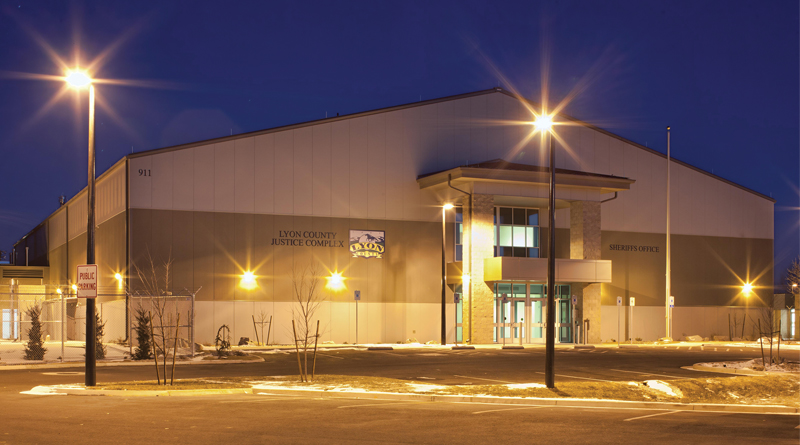The Construction Manager At-Risk Spectrum
By David Smith
During any correctional construction project, a project delivery system should be tailored to best address the project type, site constraints, financial approach, schedule goals and the owner’s preferences.

Las Vegas-based Sletten Construction Company has successfully teamed with architects all over the West Coast to deliver corrections and justice projects using each delivery method, and several variations within each. While the pros and cons of design-build (D-B) versus construction manager at-risk (CMAR) are generally understood, the approaches available to each are less often explored. Sletten has robust and recent experience delivering CMAR projects from each end of the spectrum of services, and offers those “lessons learned” here.
Traditional CMAR
In the most commonly seen application of CMAR, the owner engages a design team first, then during early design, selects the construction management (CM) team under a separate contract. The CMAR will normally first see the project at the schematic phase of work. This approach removes the CMAR team from any initial programming or studies, but ensures the CMAR is on the project early enough to impact design change without adversely affecting the schedule. Traditionally, the CMAR will provide a Guaranteed Maximum Price (GMP) at 70 percent to 90 percent complete drawings, taking on “risk” for costs exceeding the GMP. The owner-design-team-CM collaboration forms early to improve the CM’s understanding of the project intent, leading to a more accurate GMP.
There are variations to the CMAR process that benefit certain projects when the right team is engaged. Sletten Corrections division has also had recent success with two non-traditional CMAR deliveries.
CM Late
Working on a new detention and administrative complex, Sletten was brought on by the owner significantly further into the design period than typical delivery. The owner was on a path to hard-bid the work, but decided to switch to CMAR for validation of the design team’s estimates before reaching 100 percent construction documents. The team identified a significant discrepancy between the design estimate. In total, Sletten identified almost a 33 percent hole between the goal costs and the project as designed. While a traditional approach to CMAR would have headed this problem off before documents neared completion, the CMAR delivery was the right choice at this late phase to get the job back on the path to success. Sletten collaborated closely with the owner and design team in a series of workshops to identify value engineering opportunities, budget options and streamlined construction details. The team helped the owner prioritize the original program to make sure critical elements were not cut from th

Photo Credit (all): Stephanie Hable, Sletten Construction Company
e scope and “wish-list” items were reconsidered. Altogether, the construction team identified more than $7 million in savings acceptable to the owner; these savings put the project back on track. As the team worked to resolve the budget issues, Sletten was also working closely with the design team to deliver the second critical CMAR service for this project, which fast-tracked scheduling. Sletten helped identify packages to break out ahead of the main permit to keep target construction dates while the design team made the cost-savings revisions. Despite the late change to CMAR, the project was completed on time and on budget.
To read the entire article, check out the July/August issue of Correctional News.
David Smith is the director of business development at Sletten Construction Company, based in Las Vegas.

